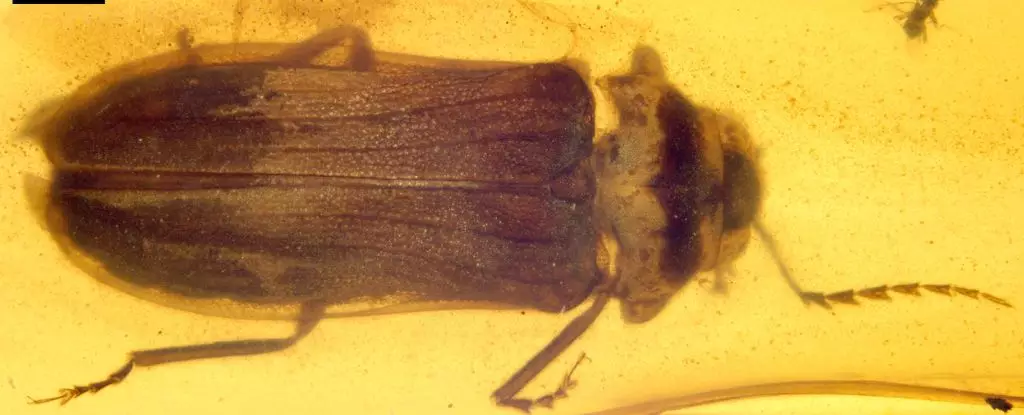As the sun dips below the horizon during balmy summer evenings, the mesmerizing dance of fireflies unfolds. These enchanting organisms, often found illuminating gardens and meadows, are a distinctive hallmark of twilight. Known scientifically as bioluminescent beetles, fireflies comprise around 2,500 species globally, each displaying unique patterns of light. Yet, the evolutionary origins of their ethereal glow remain elusive, prompting inquiries that reach back millions of years. Recent findings provide a glimpse into the past, as researchers unearthed a fossilized firefly preserved in amber that sheds light on how bioluminescence may have developed over time.
A Journey Back in Time to the Mesozoic Era
The revelation centers around Flammarionella hehaikuni, a species of firefly that existed approximately 99 million years ago during the Mesozoic Era. The fossil was discovered in Kachin State, Myanmar—a location already known for its remarkable amber deposits that have preserved various flora and fauna from the age of dinosaurs. This particular specimen offers a striking indication that the luminous capabilities of fireflies were not a recent adaptation, but rather a feature that had already evolved significantly by the time it was encased in amber.
The fossilized firefly represents the second known example from this period, following the earlier discovery of Protoluciola albertalleni. Both specimens provide critical insights into the anatomy and function of firefly bioluminescence during a time when the diversity of life forms was rapidly increasing on Earth.
Bioluminescence serves various roles within the context of firefly behavior. Primarily, these luminescent displays are utilized for courtship purposes—male fireflies emit specific patterns of light to attract females of their species. Additionally, the glow may function as a warning signal, alerting potential predators to the toxicity of the lucibufagin compounds that some fireflies possess, which can be harmful if ingested. However, the question remains: did fireflies initially evolve bioluminescence for attraction or deterrence? Recent scholarly discourse suggests that the origins of bioluminescence may predate the evolution of lucibufagins. This line of inquiry opens the door to further speculation about the earliest adaptive advantages conferred by such a striking feature.
Deep Insights from an Exquisite Find
The significance of the Flammarionella fossil is magnified by its clearly defined features, most notably its well-preserved luminescent lantern. Researchers were able to identify it as a female of the Luciolinae subfamily, which are characterized by their illuminated abdomens. The new specimen displays some unique anatomical traits, including densely haired antennae with pronounced indentations. These structures may enhance olfactory sensitivity, allowing the firefly to better detect pheromones in its environment.
Interestingly, while male fireflies tend to sport more elaborate antennae compared to their female counterparts, the unique characteristics observed in Flammarionella provide a potential lead in understanding sexual dimorphism in these creatures. Discovering a male of this species could illuminate the evolutionary pressures that have shaped the varying designs of their sensory structures.
The discovery of Flammarionella hehaikuni is a pivotal contribution to our understanding of bioluminescence and its evolutionary trajectory. While the glowing lanterns of ancient fireflies spark excitement, they also raise many questions about the ecological and evolutionary contexts in which these adaptations developed. Scientists are keen to explore further, searching for additional fossilized fireflies and their relatives to deepen our understanding of these luminous insects.
As research progresses, it becomes increasingly clear that the captivating glow of fireflies transcends mere aesthetics; it is, instead, a window into a complex evolutionary narrative. The pursuit of knowledge about these remarkable beetles continues to illuminate the shadows of our past, allowing us to appreciate not just their beauty but also the intricate stories of survival and adaptation that lie behind their enchanting light.


Leave a Reply